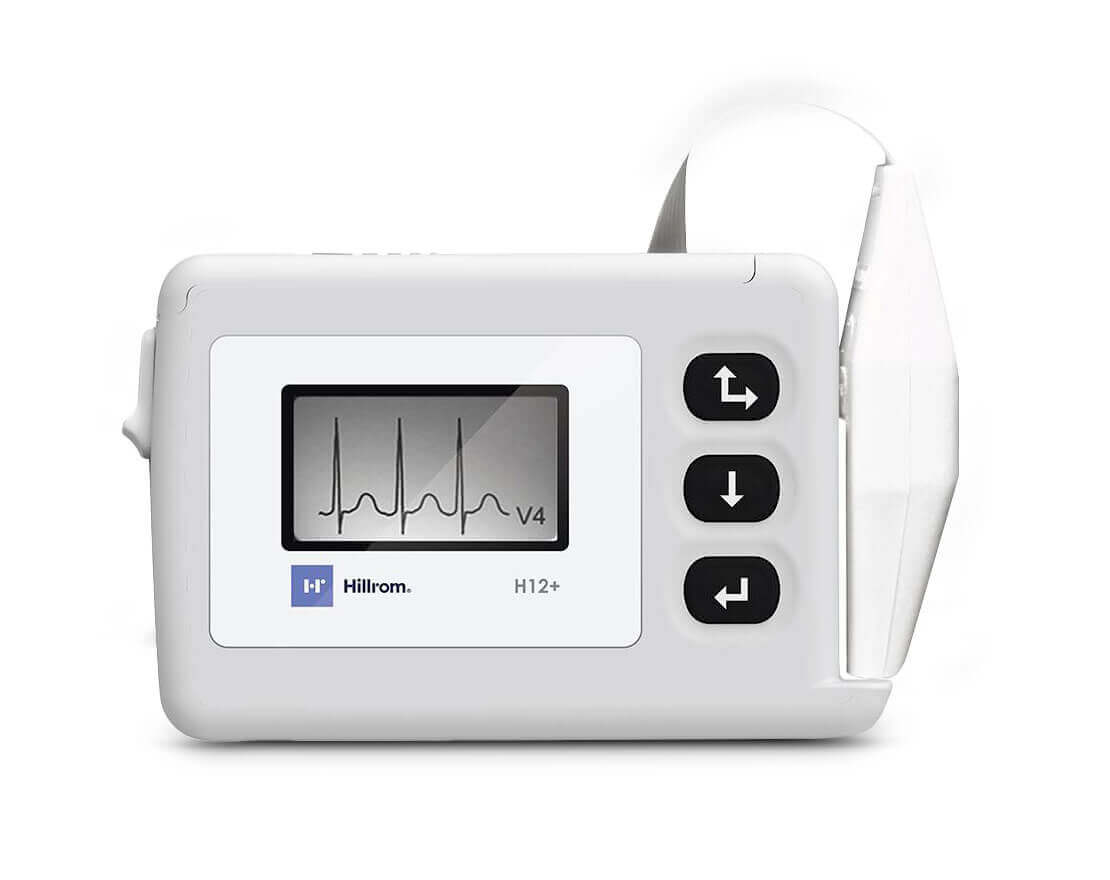Holter recorders and the importance of electrocardiograms
In this article, we are going to learn about one of the fundamental elements in cardiology, the Holter, and the characteristics of one of the most advanced and innovative Holter recorders on the market: the H12+ Holter recorder.
Frequently, in certain pathologies such as arrhythmias, palpitations or fainting, the patient does not have symptoms when they go to the hospital. That is why knowing how your heart behaves throughout a whole day or more can provide us with very useful information.
In this sense, the Holter is crucial: it allows us to keep track of the heart’s activity for 24 hours and record on a device all the heartbeats during this time.
What is Holter
The Holter is an invention of the biophysicist Norman J. Holter that answers the question: How to know how the heart behaves during any given day, while we do our daily activities?
Specifically, it is a small electronic device that records and stores the patient’s electrocardiogram. That is, it records the heart rhythm, so it is used to detect or determine the risk of irregular heartbeats (arrhythmias).
This medical device allows continuous recording of cardiac activity (electrocardiogram) or also of blood pressure figures for a long period of time, usually 24 hours.

Copyright © Hill-Rom Services, Inc.
How can monitoring be?
According to the devices and monitoring, we find:
1. Continuous monitoring devices
They collect electrical activity continuously for 24, 48 or 72 hours.
2. Intermittent monitoring devices
They collect the electrical activity of the heart only when activated by the patient.

Copyright © Hill-Rom Services, Inc.
When to use the Holter?
The Holter ECG is basically used for the study of arrhythmias, bradycardia, coronary disease and extrasystoles .
The main indications for ambulatory monitoring, which is usually 24 hours, are:
- When it is suspected that there may be some type of arrhythmia that appears temporarily and is not detected at the time of performing an electrocardiogram. Example: irregular heartbeat, dizziness, or loss of consciousness.
- Palpitations and tachycardia of origin that is not well typified.
- When you want to know if they have any episodes of lack of blood supply to the heart throughout the day.
- Dizziness, fainting, or syncope without a specific cause.
- Chest pain at rest or during exercise without stress ECG findings.
- Control of implanted pacemakers and ICDs.
- Evaluation of anti-arrhythmic and anti-anginal drugs.
- In patients who receive a specific treatment, to check if it is effective in controlling changes in rhythm or heart rate or episodes of lack of irrigation.

Copyright © Hill-Rom Services, Inc.
Does it have side effects? Is it annoying?
No. This device does not emit radiation and cannot cause cramps or electric shocks.
How does a cardiac holter work?
It consists of placing electrodes on the chest that are connected to a small device (Holter).
The device records the heart rate during the programmed time or during the period activated by the patient.
Then, what is recorded is transferred to a computer that identifies possible cardiac alterations produced during the recording period. This allows cardiologists to have very useful information about heart rate, rhythm disturbances, and possible disorders due to coronary flow disturbances.
In this case, it is vital that during the time that the patient is monitored he maintains his daily routine without limitations, since the objective is to see how the heart behaves during its normal activity.
 Copyright © Hill-Rom Services, Inc.
Copyright © Hill-Rom Services, Inc.
The H12+ digital Holter recorder
At Equimed we have extensive experience in the distribution of medical equipment and its consumables , betting from our beginnings on cutting-edge technology from the leading brands in the medical, clinical and surgical sector. And Holter devices, led by the H12+ digital Holter recorder , are no exception.
 Features
Features
Weighing just 125g, compact and lightweight, the H12+ digital Holter recorder is designed to help improve the patient experience .
This device allows you to continuously record 48 hours of high-fidelity 12-lead ECG data on every beat, all on a Secure Digital (SD) memory card with a capacity of up to 48 hours on a single AA alkaline battery.
Plus, our patented LeadForm patient cable helps maximize comfort, and a full graphic display lets you preview ECG waveforms during patient connection.
Among its characteristics , they also highlight:
Entering the digital patient ID
To enable unique identification of each recording. No external input devices are needed to enter IDs.
High-resolution pacemaker detection
The sampling rate of 32,000 samples per second per channel offers accurate detection of pacemaker spikes.
High fidelity recordings
Bandwidth between 0.05 and 300 improves clinical results thanks to an advanced algorithm (ST segment, QT/QTc interval and analysis). These recordings are quickly imported and analyzed into the HScribe Holter analysis system, which provides sophisticated review and powerful editing tools to ensure quality and accurate reporting.
VERITAS Analysis
The H12+ recorder is compatible with the HScribe holter analysis system, which integrates VERITAS signal processing and analysis functions.
Digital Holter Recorder H3+™
In addition to the H12+ digital Holter recorder, at Equimed we also have the H3+ digital Holter recorder , which offers three-channel recording with a standard pacemaker spike detection function.
In addition, it allows you to generate a continuous record of up to two days with only one AAA battery. This stands out for:
- The H3+™ Holter recorder is compatible with the HScribe Holter Analysis System , which integrates best-in-class VERITAS signal processing and analysis capabilities. Thus, recordings are quickly imported and analyzed in this analysis system.
- Weighing just 28 grams, the H3+ digital Holter recorder is small and light , offering great comfort for patients. Offers 3-channel recording with standard pacemaker spike detection function; In addition, it allows you to generate a continuous record of up to two days with only one AAA battery.








